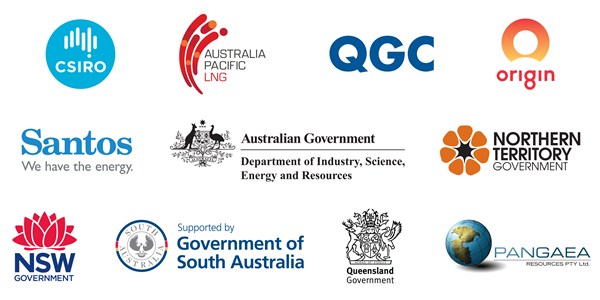GISERA Newsletter, August 2020


In a most challenging and turbulent year, CSIRO’s GISERA continues to provide high-quality, peer-reviewed research into the social and environmental aspects of onshore gas development. While the coronavirus pandemic has caused temporary delays to some field work related to existing research projects, GISERA has expanded its operations to include Western Australia and negotiated eleven new research projects across all regions in which we operate.
In addition to two new projects in WA’s prospective Canning Basin region, GISERA also secured five new projects in the Northern Territory’s Beetaloo Sub-basin and four new projects in South Australia’s Limestone Coast region. These exciting new projects bring the power of CSIRO’s scientific rigour to explore and improve understanding in areas of interest and concern to communities in those regions where natural gas development is being considered.
Research focus areas for the new projects were selected by Regional Research Advisory Committees in which community and independent representatives have majority voting rights. The research focus areas in the new GISERA projects include groundwater resources, biodiversity, land management, greenhouse gas emissions, baseline studies, and social and economic analyses.
CSIRO’s GISERA also released results of a number of important research projects completed so far this year:
- In February, results of a comprehensive assessment of community wellbeing and perceptions and attitudes towards conventional natural gas development in the south east of South Australia found a diversity of views.
- A three-year study completed in April revealed new information about the impacts on air, water and soil during and after hydraulic fracturing operations in the Surat Basin, Queensland.
- An environmental tracer analysis completed as part of groundwater baseline measurements in the NT’s Beetaloo Sub-basin (released in July) presents new information about the recharge mechanism of the regionally important Cambrian Limestone Aquifer.
- And two groundwater studies, also in the south east of SA, provided new and detailed information on characteristics of important regional aquifers. The first study (released in March) assessed likely aquifer drawdown associated with conventional gas development, and the second study (released in May) assessed potential groundwater contamination risks associated with natural gas development and operations.
Read on for details of our new projects and I look forward to releasing results as they become available.
Regards
Dr Damian Barrett
Director, GISERA
CSIRO's GISERA has started work in Western Australia, with two new projects approved and underway in the highly prospective Canning Basin, north of Broome.
A new Western Australian Regional Research Advisory Committee (WA RRAC) has been established, in which community and independent representatives have majority voting rights, and determine the focus and funding of research proposals.
The WA RRAC has approved two new studies. The first explores the current state of knowledge of groundwater systems in the Canning Basin and identifies requirements for future investigation, characterisation and monitoring of groundwater systems.
The second will assess the current state of knowledge about the biodiversity of the Canning Basin, identify species and ecological communities that are of conservation or cultural significance, and recommend further research to fill knowledge gaps.
The Canning Basin is located in central northern Western Australia, approximately 1,500 km north east of Perth. It is the largest sedimentary basin in Western Australia - it has an onshore area of about 530,000 km2 and an offshore area of about 110,000 km2. The nearest urban centres are Broome and Derby. The Canning Basin includes parts of the Fitzroy River catchment, which flows into King Sound south of Derby.
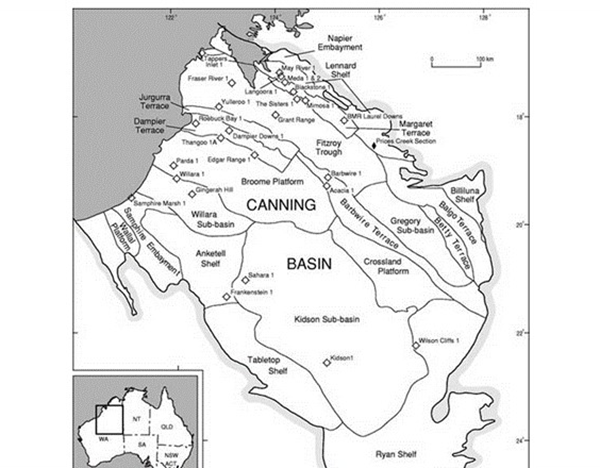
Not only are we pleased to welcome Western Australia to GISERA, we are also excited about the two new projects that will be undertaken in the state.
Groundwater baseline study of the Canning Basin
Groundwater resources across the Canning Basin are critical for local communities and are of cultural significance to Aboriginal and Torres Strait Islander people in the region. They are also important to industries, including agriculture and energy.
The Canning Basin represents a potential opportunity for groundwater resources for use by shale gas and other industries. This project will explore the current state of knowledge of groundwater systems in the Canning Basin and identify knowledge gaps for future study. The project will develop a framework on groundwater baseline characterisation that covers: groundwater balance, flow and interaction between aquifers; groundwater quality; environmental function; and current use.
Figure: Canning Basin elements (from Geoscience Australia)
Baseline assessment of the biodiversity of the Canning Basin
Baseline knowledge of the biodiversity of a region plays an essential role in assessing the risk of any potential development. This project will provide an assessment of the current state of knowledge on the composition and distribution of the biodiversity of the Canning Basin in WA.
Existing knowledge of the biodiversity of the Canning Basin is incomplete and segregated. This desktop study will accumulate existing sources of information about the plants and animals that occur in the region, and identify hot spots of species richness. It will provide a framework for further research, both at the species level (identifying species that are poorly known) and from a geographic perspective (identifying locations that have been poorly sampled).
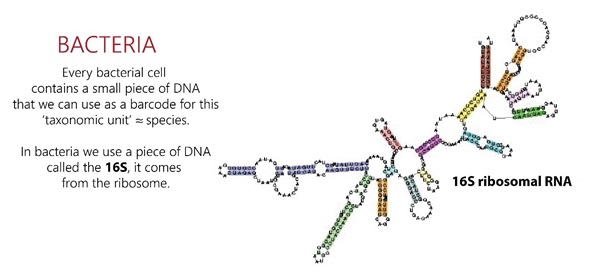
There are several new projects approved for South Australia, across the areas of groundwater, and socio-economic opportunities and risks.
Microbial degradation of chemicals and fluids in aquifers of the Limestone Coast, South Australia
Access to clean water is critical for communities and to support a healthy environment. The Tertiary Limestone Aquifer (TLA) is the primary groundwater supply for the Limestone Coast region of SA. With potential development of gas resources in the region, a key task is to ensure there are no impacts upon the water quality of the TLA.
This study will use molecular methods to investigate bacterial DNA to assess baselines of microbial communities in the TLA, with a focus on sites of agricultural importance near prospective onshore gas activities. It will also assess microbial degradation potential on a range of chemicals likely to be used in onshore gas activities in the region.
Figure: Bacterial DNA is used for taxonomic purposes
The role of gas in South Australia
SA has strong policies on renewable energy deployment and access to gas. This project is designed to help inform these policies and provide insights on the role that gas may play in delivering future fuel and technology options.
The project will clarify the role of natural gas in meeting the state's renewable energy, security, emissions and energy pricing goals. The research aims to define a least-cost technical pathway towards 100 per cent renewable electricity and a hydrogen industry that moves toward zero-net emissions. This pathway will show how higher renewable shares are supported by flexible technologies, including natural gas, and how these technologies may change over time.
Sustainable development and the increasing demands on water resources have implications on the amount of water available for agriculture and industry. With the aim of improving management of groundwater resources in south east SA, this study will develop and test a decision support framework.
The research will consider future groundwater use scenarios, taking account of climate change and various water use patterns for irrigation, forestry, onshore gas and other industries. With stakeholder participation, modelling and multi-criteria analysis (MCA), the framework will assist policy development and decision makers to sustainably manage valuable water resources in the region.
Perspectives on risk to local markets and industries
A simple definition of risk is the potential for uncontrolled loss of something of value. Value can include both wealth and wellbeing. The perception of risk is a subjective judgement that individuals may make about the severity and probability of a risk.
Agriculture in the south east of SA has placed great value in its local brand and there is a perception of risk to this from potential gas development in the region. This project aims to assist community understanding and inform policy development that relates to any concerns and potential market impacts on the value of branding, and the possible impacts from conventional gas development.
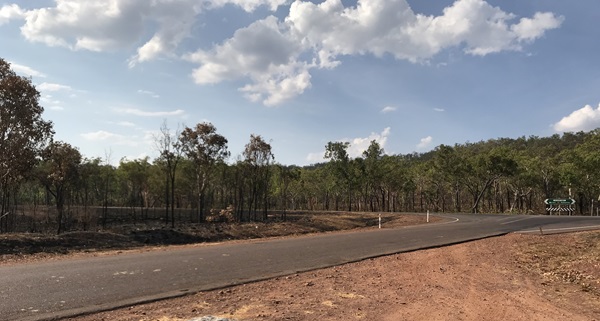
There are five new projects beginning in the NT, based upon recommendations made in the Scientific Inquiry into Hydraulic Fracturing in the Northern Territory.
Mapping future transport passages and volumes for improved planning and operation
Onshore gas projects can impact regional road networks. These impacts can include road damage, especially to local roads, as well as noise and dust. They can also lead to benefits, such as improved access to markets and services. This project will map likely impacts for various development scenarios of onshore gas wells across the NT road and rail network.
The project will analyse road and rail freight costs, flow and impacts for identified sites in the Beetaloo Sub-basin using CSIRO's Transport Network Strategic Investments Tool (TraNSIT). It will consider both construction and operational phases, and test a range of interventions that may increase road safety while reducing costs and impacts on the environment and local communities.
Putting land management knowledge into practice
Hydrology, soil loss and pasture dynamics need to be well understood and communicated to manage potential environmental risks when land development takes place. This project aims to develop high-quality spatial data to help landholders, regulators and the gas industry to evaluate the design and placement of gas infrastructure. This will help protect surface waters and vegetation, and reduce erosion, soil damage and dust.
Part of this work will include developing novel communication tools to improve the exchange of data between groups. The research will use modern data visualisation techniques to present spatial data relating to landscape processes in the Beetaloo Sub-basin in a "virtual landscape" using augmented reality technology.
Understanding and managing impacts to biodiversity from roads and pipelines in the Beetaloo
There are potential impacts on biodiversity and ecosystem function from onshore gas development in the NT. These impacts can occur through the establishment of transport infrastructure and increased traffic volumes.
This study investigates how roads, pipelines and other linear transport infrastructure may impact biodiversity in the Beetaloo Sub-basin during the potential development of an onshore gas industry. New scientific information about biodiversity impacts will help identify areas threatened by infrastructure development, and assist management approaches and decision making to reduce risks to key components of biodiversity during development.
Offsets for life cycle greenhouse gas emissions of onshore gas in the Northern Territory
An important aspect of developing natural gas is the estimation of fugitive methane emissions. CSIRO has been actively conducting research on methane emissions for more than 30 years across a range of industries, including the coal seam gas industry in Queensland.
Currently, there is no natural gas production in the Beetaloo Sub-basin in the NT. This project will explore feasible options to offset life cycle greenhouse gas (GHG) emissions associated with any future production and Australian consumption of onshore gas potentially extracted from the region. The project will use scenario analysis to represent prospective gas extraction, along with technical calculations on the GHG emissions implications of those scenarios.
Onshore gas water life cycle management options framework
Water is one of the main concerns held by communities potentially impacted by shale gas development in the Beetaloo Sub-basin. This project aims to develop a water management framework with a focus on sustainable options for managing onshore gas wastewater.
The outputs include fit-for-purpose management and water treatment alternatives that consider costs, and optimal environmental and social outcomes. The project will involve close consultation with industry, government and community groups to ensure key social, environmental and economic criteria are built in. The framework will guide industry and regulators to make wastewater management decisions that benefit local communities and the environment.
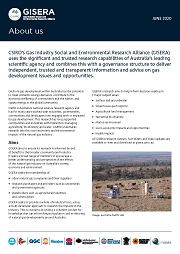 |
Don't have time to read a detailed report?
GISERA provides a fast track to the latest news and research project progress with clear, concise and easy-to-read fact sheets.
Here's the latest from the GISERA website:
You can access all of GISERA's fact sheets via our website.
